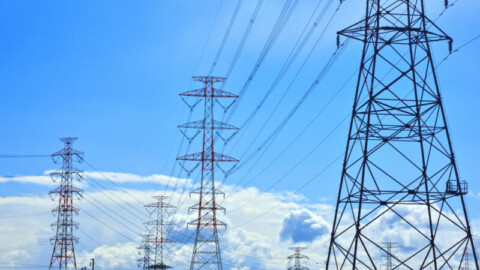Grit and sand found in sewage can cause a number of problems at sewage treatment plants if the correct equipment is not used.
Sewage has a lot of grit and sand in it which comes from a variety of sources, including cracked or old sewer pipes, older brick lined sewers, runoff from building sites, and from what goes down kitchen sinks. Grit can also include glass, egg shells, bone, coffee grounds, and food waste.
The amount of grit normally received at a sewage treatment plant is around 10-20kg per million litres. While this may not seem like a lot, if not removed it causes a number of problems in the sewage treatment plant.
It causes abrasion of screens, pumps, pipes, sludge dewatering machines, and accumulation in channels, pipes, tanks and digesters is just the beginning. It also blinds membranes and buries aeration systems leading to poor treatment and wasted energy.
The accumulation in the base of anaerobic digesters forms a hard layer of sand, which in turn drastically reduces the energy production of the digesters.
The cost to maintenance budgets to regularly drain down and remove the grit can be large. Just draining down and cleaning a primary sedimentation tank system can cost $150,000 or more while draining and cleaning a single digester can be five times that cost.
Therefore, the headworks of a modern sewage treatment plant almost always includes a grit removal stage. These modern systems are designed to remove particles with a density 1.6 – 2.6 and sizes from 150 microns to 2mm.
Unfortunately, the grit removed is also coated in an unsanitary organic layer which includes heavier organics so it can’t be easily reused. These unsanitary organics make up to 30 per cent of the contents and the resultant grit is smelly and attracts vermin.
This means the grit cannot be recycled as aggregate and needs to be carted in sealed trucks to expensive hazardous waste landfill for disposal.
The extra 30 per cent means additional trucking and disposal volume cost and these organics are no longer available to the sewage treatment plant which uses them to make energy or fertiliser creating a loss-loss situation.
In the early 1990’s HUBER Technology together with the TU Munich researched the effects of grit washing in order to establish a system that would produce a higher dry solid with low organic content, suitable for low-cost disposal at non-hazardous landfills and reuse as road base.
The result was the HUBER RoSF4 Coanda Grit Washer, the world’s first fluid bed washing system for grit.
Since its development, HUBER Technology have now delivered over 2,000 units to sewage treatment plants operating in over 50 countries, including some of the largest sewage treatment plants in Australia.
The research showed that the fluid bed washing system results in the grit particles rubbing against each other which removes the organics that are connected to the pores of the grit particle.
The end result is a grit product that contains 90 per cent dry solids and less than three per cent organics. It is virtually normal sand with no odour.
In Australia, the first HUBER installation of this technology took place in 2003. The result was a dry product that led to a significant reduction in truck movements through dense urban development. Not only was the cost of disposal reduced, but the community benefited from the reduction in truck movements.
HUBER RoSF4 Grit Washing Systems are now operating throughout New South Wales, Victoria, South Australia, Western Australia and Queensland. The technology has proven to be extremely reliable, efficient and cost effective.
HUBER has recently extended the RoSF4 range to include a low flow and more compact RoSF4GE system for smaller treatment plants, such as those in found in regional locations where disposal has traditionally been even more problematic.
The RoSF4 can also be supplied with a pre-treatment step to allow the processing of grit and primary sludge. Essentially the equipment is the same, but re-configured to suit the high solids that are experienced with primary sludge.
These new systems effectively combat the wear issues in sludge dewatering equipment and accumulation in sludge digesters and like the original grit washers also provide a washed grit for economical reuse or disposal.
About the author
John Koumoukelis’ water industry career spans over 16 years. His goals are to provide energy-efficient and high-performance process equipment and treatment solutions to a variety of clients within the wastewater industry, to allow them to meet their sustainability targets.
His experience includes the introduction of key technologies into the Australian market place such as step screens, centre flow band screens, advanced grit washing and screenings washing, sludge screening and digester pre-treatment.
He also has extensive process design and sizing knowledge with inlet works, biological process and sludge management systems as well as water reuse using hybrid MBR-RO for industrial applications.
For over 15 years John has had a close association with HUBER Technology AG of Germany.
For more information on Hydroflux Huber, its products and services, please visit the Hydroflux Huber web site www.hydrofluxhuber.com.au












